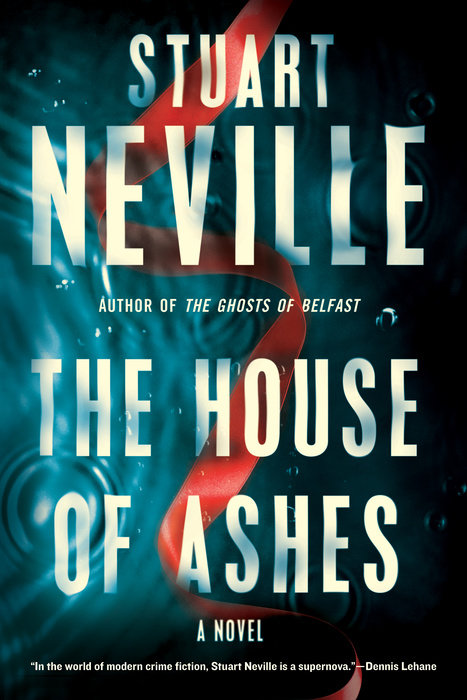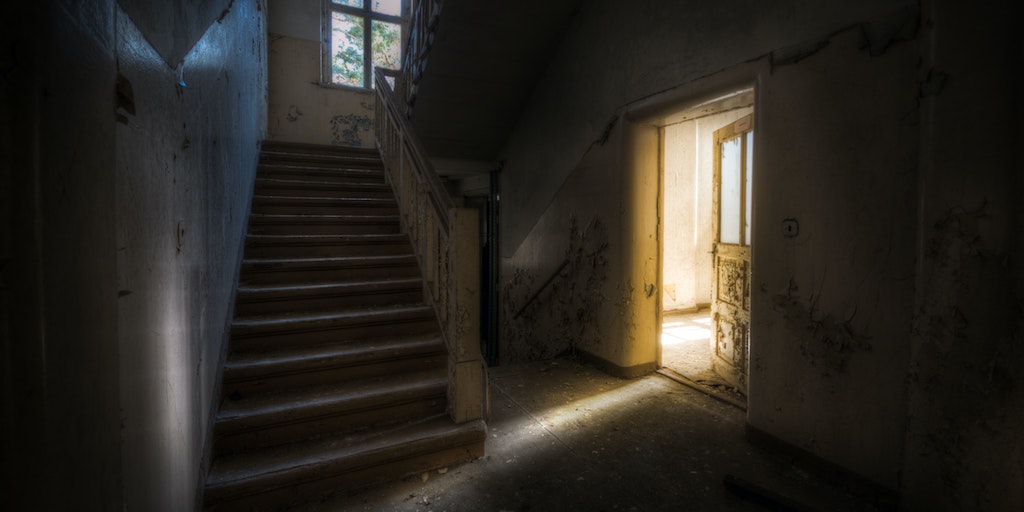If these walls could talk, they would bleed. That’s what sleep-deprived housewife Sara Keane discovers on her fourth bleary morning at The Ashes, her and stern husband Damien’s seemingly idyllic Northern Ireland home that has just one odd trait: a rust-red stain on the stone floor that, no matter how hard she scrubs, won’t go away. Sara initially dismisses the recurring blemish as a quirk of her imagination, as “certainty had become a stranger to her” following a nervous breakdown that necessitated their recent move from London. How lucky, then, that her father-in-law was able to procure this gorgeous old farmhouse for them, and really she should be able to blink away possible phantom bloodstains in favor of embracing this new life.
Except that while she’s back on her knees scrubbing, an old woman starts banging on the door: tracking in fresh blood from her lacerated feet, her babbling about how this is her house indecipherable yet her conviction clear. It’s a startling opening to Stuart Neville’s (So Say the Fallen, The Final Silence) first standalone novel in nearly a decade, waking up Sara (and readers) faster than a morning coffee. The next few lightning-quick events—Damien’s raging appearance; his clear recognition of the woman, whose name is Mary; his shuffling her away before Sara can react—sit heavy and acidic like heartburn. Neville, whose past police thrillers have earned him Tana French comparisons, turns his focus to the domestic in this multigenerational study of an inviting house and the terrible secrets it hides.

Sara can’t get Mary’s distressed claims of ownership out of her head, so despite Damien’s admonishments not to, she tracks the woman down at an assisted living facility in town. As she makes small investigations into the history of the Ashes—through helpful locals like a chatty shopkeeper and the hunky electrician in possession of old newspapers—and invites Mary to share her own horrific history, Sara begins to unravel the bloody legacy of their new home, and in doing so frays Damien’s tight leash on her.
While the Northern Ireland setting is familiar to Neville’s body of work, his pivot toward the domestic, and especially the darkness lurking within a young marriage, is meant to evoke connections with Gillian Flynn (Gone Girl, Dark Places, Sharp Objects). Yet there is one damning difference: the cover copy describes Sara gathering the strength “to stand up to her abuser”; it is apparent in her first interaction with Damien that he has complete control over her life. Or rather, it is apparent to everyone but Sara herself; she tries to convince herself that it makes sense for him to monitor her phone calls and withhold the car keys, all for her own good after a suicide attempt back in England.
Because this is clear to the reader from the get-go, there is no Flynn-esque (or Paula Hawkins, for that matter) reversal in which the man’s gaslighting is revealed partway through. Instead, readers watch a woman who at the start of the story simply cannot help herself—a social worker, no less, who is adept at coaxing revelations out of others but seems unable to grasp the scope of her own domestic prison.
Perhaps that helplessness is the point: the reader is more an observer of Sara’s slow realization, aided by Mary’s confession, and how it strengthens her will to fight her way out of this situation. The same goes for Mary’s recounting of her childhood in The Ashes—the only home she has ever known, raised by a household of cowed “mommies” and cruel “daddies” locked in an inhumane pattern of ownership and abuse.
In that, The House of Ashes comes across as less horror or thriller and more akin to true crime: it lays out a hideously unimaginable situation that nonetheless is happening in front of you. There are no extra “twists”; any new revelation is something you could have guessed but desperately wished would not be the case. Instead, you can only witness these women’s degradation and their daily (hourly, even) quandary between trying to escape or staying put but surviving. “We can bloody well stay alive,” one female prisoner lectures another about their male captors, “and maybe we’ll outlive them. That’s what we can do. Just get by, just try to get through the day without making them angry. And they’re always angry. All we can do is survive, one day after another. Stay quiet, keep our heads down. You try to do anything else, and they’ll kill you.”
Neville alternates between four perspectives, splitting time between Sara in the present and a trio of voices from The Ashes’ past. While at first Sara and a young Mary alternate in telling their respective stories within those walls—from bedroom to basement—other voices join in at key points. These additional perspectives come and go as the story dictates, a keen narrative choice reflecting the many lives that inhabit this space, some for their entire lifetimes… however long that may be.
In addition to the psychological thriller framework, there is also a ghostly aspect to the story, in a clever turn from Neville: from a near-death sickness in childhood to fleeing a fire as an adult, Mary is attended by “the children.” Her reasoning for barging in on Sara that first morning is to check that the children are all right, despite no evidence of their presence. At first this could easily be written off as a senile old woman’s hallucinations… until Sara herself glimpses the most recognizable child, a girl in a white dress with scarlet ribbons. Mary never tells her who this is, but flashbacks fill in all the details and thus corroborate Sara’s sighting.
As The House of Ashes asserts, the greatest strength that one woman can offer another is to believe her. If one woman sees it or thinks it, it’s a hallucination or a pipe dream—but if two women can see the same thing, it’s a chance to live.



